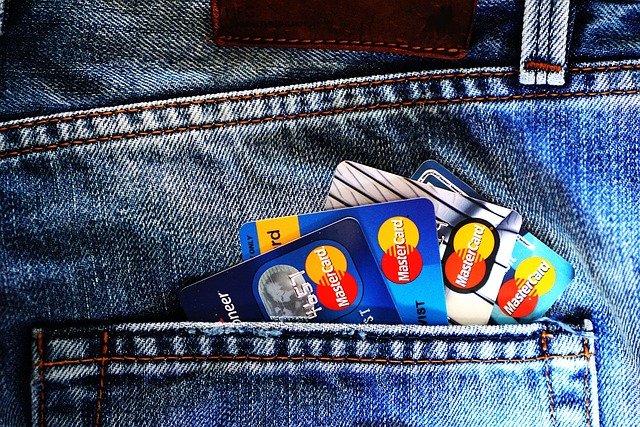Understanding E-Bike Financing Options: A Guide to Bike Loans
E-bikes represent an eco-friendly, cost-effective transportation alternative that continues to gain popularity across urban and suburban environments. While the benefits of e-bikes are clear—reduced commute times, lower carbon footprint, and decreased transportation expenses—the initial investment can be substantial. With e-bikes typically costing between $1,000 and $8,000, many consumers seek financing solutions to make ownership more accessible. This comprehensive guide explores the various methods to finance an e-bike purchase, from traditional loans to manufacturer payment plans and emerging flexible financing options.

An Overview of E-Bike Purchase Options and Flexible Plans
The e-bike marketplace offers several purchase pathways to accommodate different financial situations. Traditional retail purchases involve paying the full amount upfront, which may be ideal for those with available funds who want to avoid interest charges. However, many consumers prefer spreading payments over time through financing options. Manufacturer-direct payment plans have become increasingly common, with companies like Rad Power Bikes, VanMoof, and Specialized offering in-house financing with competitive interest rates and flexible terms. Additionally, bicycle retailers frequently partner with third-party lenders to provide point-of-sale financing options, enabling customers to complete purchase and financing in one transaction.
Some manufacturers and retailers have introduced subscription models and rent-to-own programs, which allow riders to make monthly payments while using the e-bike, with options to purchase outright after a predetermined period. These models provide flexibility for those uncertain about long-term e-bike ownership or those wanting to test specific models before committing to a purchase.
Exploring Ways to Make Owning an E-Bike More Accessible
Traditional financial institutions offer several lending options that can make e-bike ownership more attainable. Personal loans from banks and credit unions typically feature fixed interest rates and repayment terms, making them suitable for e-bike purchases. The application process generally requires credit checks and income verification, with rates varying based on creditworthiness. For those with excellent credit, unsecured personal loans may offer rates as low as 5-7%, while those with fair credit might face rates between 15-20%.
Credit cards present another financing avenue, particularly those offering promotional 0% APR periods which can provide interest-free financing for 12-21 months. However, this approach requires discipline to repay the balance before the promotional period ends, as standard interest rates often exceed 20%. Some bicycle-specific credit options have also emerged in the market, such as the Trek Credit Card and specialized financing programs from major bike retailers.
For budget-conscious consumers, certified pre-owned e-bikes present an opportunity to enter the e-bike market at a lower price point. Many reputable dealers now offer used e-bikes with partial warranties and financing options, typically at 20-30% below new model prices. This combination of reduced initial cost and available financing makes e-bike ownership accessible to a broader demographic.
Key Considerations When Choosing Payment Options for E-Bikes
When evaluating financing options, potential e-bike owners should carefully assess several factors. Interest rates significantly impact the total cost of ownership, with lower rates resulting in substantial savings over the loan term. For example, on a $3,000 e-bike with a 36-month term, the difference between a 6% and 15% interest rate amounts to over $400 in additional interest payments.
Loan term length presents another important consideration—shorter terms typically mean higher monthly payments but less overall interest, while longer terms reduce monthly payments but increase the total cost. Most e-bike financing options range from 12 to 60 months, with 24-36 months representing the most common terms. Consumers should also examine fee structures carefully, as origination fees, early repayment penalties, or application costs can significantly affect the loan’s value proposition.
Credit requirements vary substantially across financing options. Traditional lenders typically require good to excellent credit scores (670+), while some specialized e-bike financing programs and “buy now, pay later” services may accept applicants with fair credit scores (580-669). For those with limited credit history or lower scores, secured loans or retailer financing with down payments might offer accessible alternatives.
Specialized Financing Programs for E-Bikes
Several innovative financing programs have emerged specifically for e-bike purchases. Many cities and regional governments now offer e-bike incentive programs, including tax credits, rebates, and subsidized financing. For instance, Denver’s E-Bike Rebate Program provides rebates between $400-$1,200 depending on income level, while California’s Clean Vehicle Rebate Project offers up to $750 for e-bike purchases. These programs aim to encourage sustainable transportation adoption and can significantly reduce the effective purchase price.
Workplace benefits have also evolved to include e-bike purchasing assistance. Some employers offer commuter benefits that can be applied toward e-bike purchases or provide access to corporate discount programs with major manufacturers. Additionally, employer-sponsored wellness programs occasionally include subsidies for active transportation options like e-bikes.
Comparison of E-Bike Financing Options
| Financing Option | Provider Examples | Interest Rates | Term Length | Key Features |
|---|---|---|---|---|
| Manufacturer Financing | Rad Power Bikes, VanMoof | 0-15% | 12-48 months | Often includes maintenance packages |
| Personal Loans | SoFi, Lightstream | 5-36% | 12-60 months | Fixed payments, no collateral needed |
| Point-of-Sale Financing | Affirm, Klarna | 0-30% | 3-36 months | Quick approval process, flexible terms |
| Credit Cards (0% Promo) | Chase, Citi, Bank of America | 0% intro, then 15-25% | 12-21 months | Interest-free during promotional period |
| Credit Union Bicycle Loans | Verity Credit Union, Clean Energy CU | 5-12% | 12-60 months | Often lower rates than traditional banks |
Prices, rates, or cost estimates mentioned in this article are based on the latest available information but may change over time. Independent research is advised before making financial decisions.
Making the Final Decision on E-Bike Financing
When selecting the most appropriate financing option for an e-bike purchase, consumers should comprehensively evaluate their financial situation and transportation needs. Creating a realistic budget that accounts for both monthly payments and additional costs such as maintenance, accessories, and insurance provides a foundation for sustainable ownership. Comparing the total cost of ownership across different financing options—including interest, fees, and potential maintenance packages—reveals the true long-term expense beyond the advertised monthly payment.
For many consumers, the most advantageous approach combines multiple strategies, such as making a partial down payment to reduce the financed amount, utilizing manufacturer rebates or government incentives, and securing low-interest financing for the remainder. This balanced approach often results in manageable monthly payments while minimizing the overall interest paid. Above all, prospective e-bike owners should prioritize financial sustainability, ensuring that their financing choice supports rather than strains their overall financial health.




